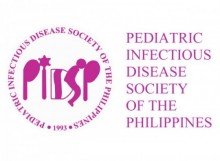Journal 2017 Vol.18 No.1
Fever Of Unknown Origin In Children: A Five-Year Review
Ma. Fema A. Cabanalan-Rivera, M.D., Ma. Liza M. Antoinette M. Gonzales, M.D.
Ma. Fema A. Cabanalan-Rivera, M.D., Ma. Liza M. Antoinette M. Gonzales, M.D.
Abstract
Objective: The clinical presentation, outcome, and risk factors for mortality in children with Fever of Unknown Origin (FUO) were determined.
Methods: Medical records of pediatric patients admitted for FUO from January 2009 to December 2013 were reviewed. Clinical manifestations, physical exam findings, diagnostic work-ups and final diagnosis were determined, as well as the relationship between final diagnosis and risk for mortality.
Results: Fifty-seven patients with FUO were included. Weight loss, cough, colds, and rashes were common symptoms while pallor, lymphadenopathies, and hepatomegaly were common physical exam findings. All patients underwent Phase I evaluation for FUO, while 73.7% underwent further diagnostic tests. A specific etiology was established in 96.5% of cases: infectious, 43.9%, connective tissue disease, 38.6%, and hematologic/oncologic, 14%. Two cases remained to have no specific diagnosis. Majority of patients had a benign course and were discharged improved (84.2%). The mortality rate is 15.8% and was not associated with any disease category (p-value 0.204).
Conclusion: FUO in children occurs across all age groups. Its clinical presentations are varied and non-specific and common signs and symptoms are pallor, lymphadenopathies, weight loss, cough, colds. and joints pains. Infection is the most common cause of FUO in children, followed by connective tissue diseases and hematologic and oncologic diseases. The mortality rate from FUO is 15.8%.
https://doi.org/10.56964/pidspj20171801006
| View Full Article in PDF format |
